Need some updated social media best practices? You’ve come to the right place.
Social media is one of the best marketing strategies for helping your brand talk to your customers, prospects, and the world. Unlike more traditional marketing methods (like print ads, commercials, and emails), social media gives customers (and potential customers) the chance to have (public) conversations with companies.
This is where you can really show off your company’s awesome customer experience. And thanks to handy platforms like RingCentral Engage Digital™, it’s super simple to coordinate and deliver a personal touch through social media.
Social media can be a much more intimate form of marketing too—ads show up next to status updates and pictures of babies—but ironically, since it’s public, it can actually generate more exposure.
Did you know that there are approximately 4.88 billion people using social media? It’s probably one of the farthest-reaching channels of communication in the world.
But how can you use social media to help your business? We know that many businesses are already doing it. Oreo, Skittles, Dollar Shave Club—so many companies are promoting themselves brilliantly on different social media platforms. How do they do it?
We’ll show you.
In this deep dive into best practices for social media posts, we’ll look at:
- Which social media channels you should be using
- 11 social media best practices for every platform
- 3 social media best practices for Facebook
- 3 social media best practices for Instagram
- 3 social media best practices for Twitter
- 4 social media best practices for Pinterest
- 4 social media best practices for Snapchat
- 4 social media best practices for TikTok
- 3 social media best practices for LinkedIn
👀 Are businesses actually fully remote right now? How many are already back in the office? Find out in our State of Hybrid Work report.
Which social media channels should you be using?
There are dozens of social media platforms, and all of them attract different audiences and conversations. You might find illuminating (and challenging) political discussions on Twitter, niche memes on Reddit, and delicious casserole recipes on Pinterest.
This doesn’t mean you need to be pushing ads and content on every single social network in existence. But using social media is now an essential part of your business’s omnichannel user experience.
Figure out which platforms are best for your business and go from there. Plan out a detailed social media campaign that encompasses the platforms your customers prefer. Let’s look at the strengths and weaknesses of some of the biggest platforms.
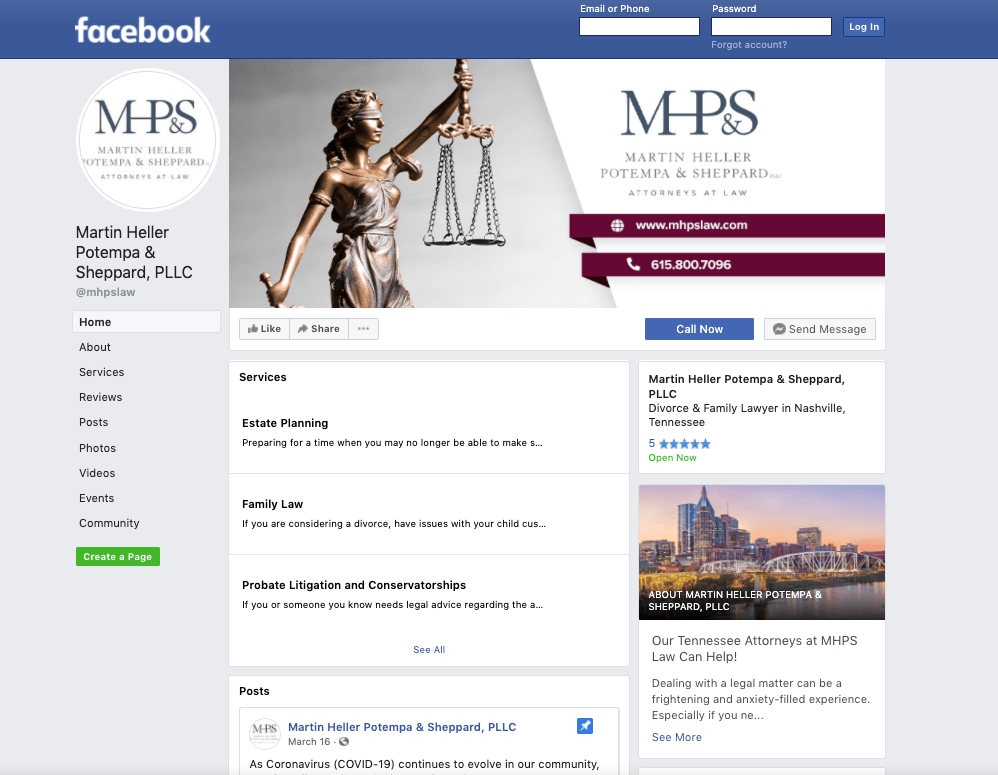
It’s the reigning king of social media. A whopping 69% of adults in the US use Facebook. Its audience is huge and diverse, and it sends the most website referral traffic compared to other networks. According to Sproutsocial, about 75% of women use Facebook, while about 63% of men use it. Representation across age groups is fairly equal, but highest amongst the 18–64 crowd. People tend to go to Facebook posts for news, entertainment, staying connected with others, and shopping.
Make sure to consider the impact of recent news—and even statements from its former employees—around security, lack of oversight of the platform, and its role in causing harm to societies and countries around the world. Will this negatively impact the business benefits of using Facebook in the future, and would you be better off focusing on other social media channels?
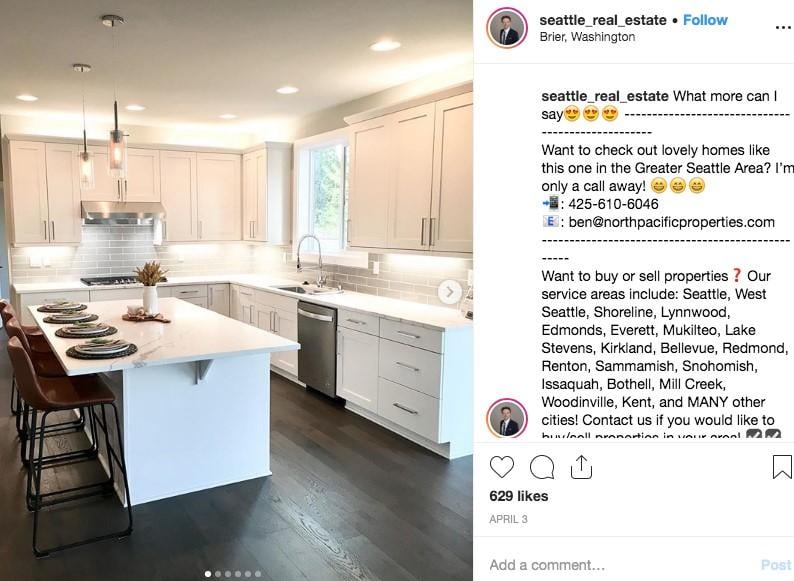
Instagram is also one of the most popular social media networks around, but the audience is a little more narrow. It’s hugely popular with younger crowds, including millennials and Gen Zers. Like Facebook, Instagram is slightly more popular with women than with men.
Most importantly, it’s a highly visual network—which means it’s best for brands with really cool or interesting-looking products. You can post both static images and short videos, but the one drawback is that it’s not the best for driving traffic to your website.
Instagram is great for advertising, though, because it allows for both organic and paid strategies. And since it’s so visual, it’s not hard to capture your audience’s attention—if you have a well-curated feed. Did we mention that Instagram is also incredibly popular?
Each month, over 1 billion people are accessing Instagram. Not to mention the 1 million advertisers that are working on the platform. So if you’re not on Instagram yet, and if you’ve got a beautiful product, you might be missing out.
Twitter is (relatively) less popular but still has a large user base, with 22% of American adults on the platform. Slightly more men than women are using Twitter, and it’s most popular with 18–24 year-olds.
Like with Facebook, some people might consider Twitter a news platform as well as social media. (Is that a good idea? Probably not, but that’s just us.) Sharing social media content, aka “retweeting,” is pretty common and is a huge reason why many posts on Twitter go viral.
Oreo is one of the brands that have really mastered Twitter and partnered with the right influencers and celebrities:
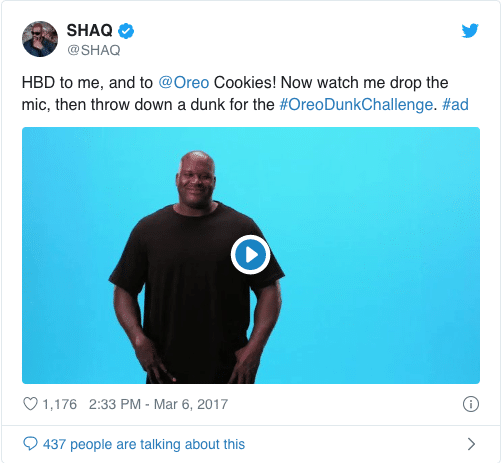
Oh, and it’s an excellent way to share blog and website content too.
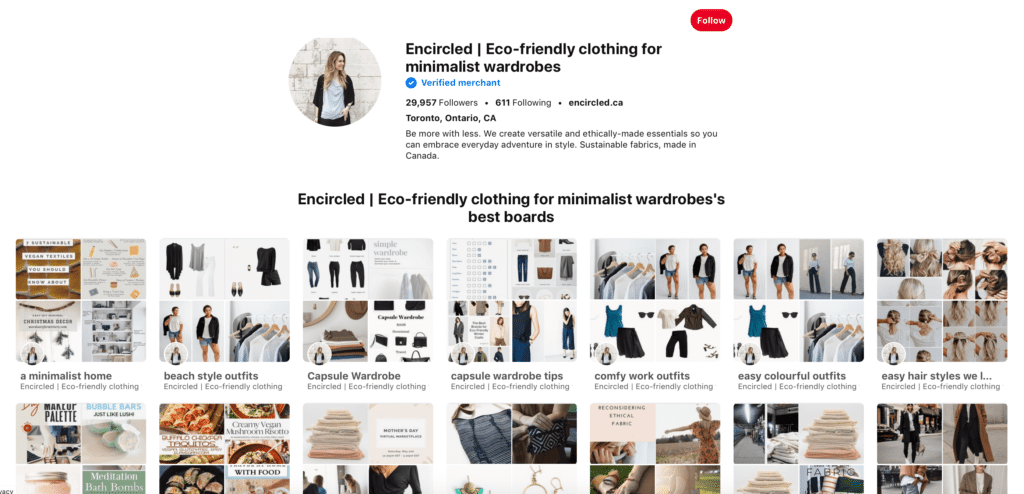
Another highly visual platform with about 322 million users internationally, Pinterest’s audience leans more female than male, and most users are looking to save content for inspiration (popular categories include cooking, crafting, and decorating). The platform went through a bit of a lull a few years back, but it has experienced a surprising resurgence. Good on them.
Snapchat

Don’t forget about Snapchat. You may not use it, but it’s hugely popular with younger audiences, especially teenagers. In fact, 41% of teenagers rated Snapchat as the most important social media platform. Why? Probably because Snapchat is arguably the best platform for engaging directly with your audience.
TikTok
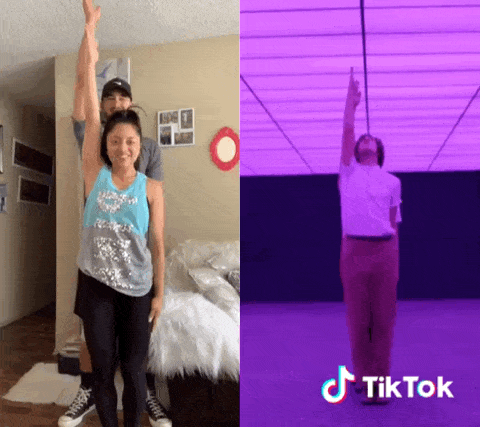
Speaking of teenagers: if you’re looking to reach Gen Z, Tiktok is where you need to be. In the United States alone, Tiktok has around 100 million active users, with over 50 million logging in at least once a day. TikTok is known for its viral trends by influencers set to songs, sound effects, and even dialogue from movie, TV, YouTube, and everyone’s favorite defunct platform: Vine. Just like on Instagram and other platforms, brands can work directly with influencers to promote their content.
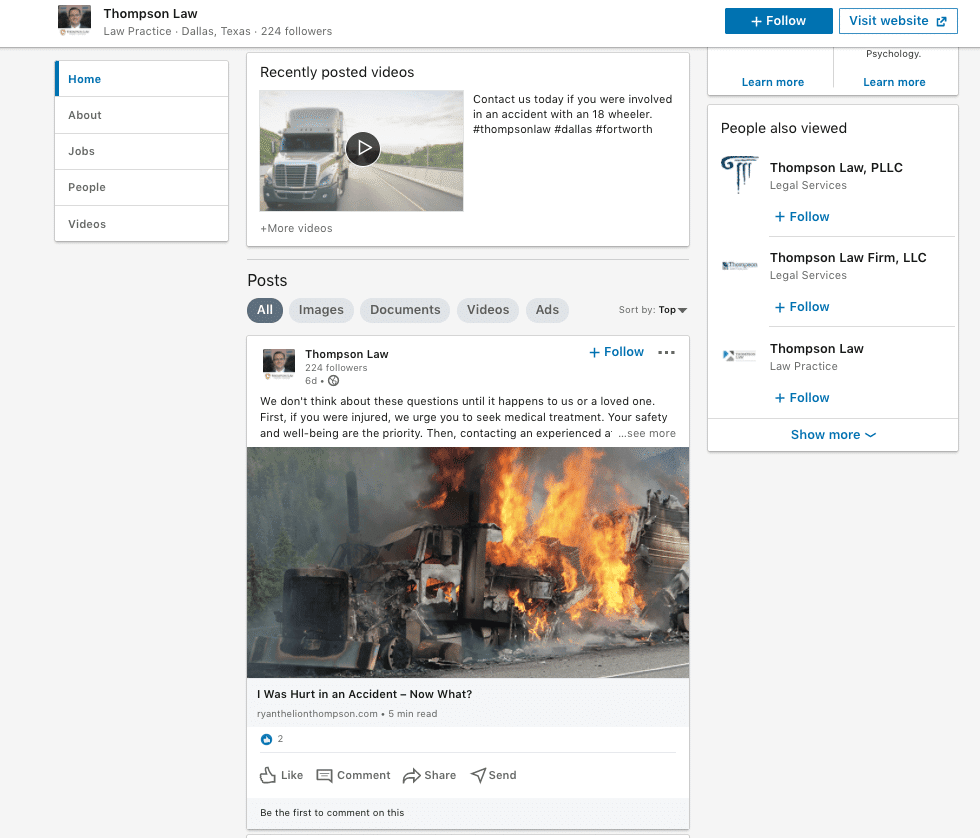
If you work for a company, you’ve probably heard of this one. LinkedIn is a professional network and although it has ad content, these tend to be targeted to professionals. High-quality industry articles, B2B, and SaaS-related topics are probably among the most-shared types of content.
Now, let’s look at some social media best practices that apply across all these platforms.
11 best practices for all social media platforms
Your strategies for social media posting should adapt to each platform you’re posting on. But, there are a number of best practices that apply to all networks. We’ll get into specific guidelines for the biggest social media networks later, but first let’s look into the big picture stuff first.
1. Respond to messages—quickly
This is Social Media 101. Especially if you’re managing multiple social media platforms (which is pretty common for businesses). You need to make sure that you’re responding to all the direct messages people are sending you—and also the public posts that may not tag (@) you directly.
Expectations are high on social media in terms of response time, and if someone messages you, they’re most likely expecting an answer within a day—if not earlier. So, how can you do this efficiently? It’s not like you can just spend all day jumping between four or five dashboards on every social media account answering messages and public posts.
One simple way to help with this is to use a social media management platform that consolidates all these messages on every channel (even live chat and emails) into one place. For example, you can do this pretty easily with RingCentral Digital Engage.
Plus, it can even merge your customers’ different social media profiles into one so that you can see someone’s full conversation history with you across Facebook, Twitter, Instagram, and more. This way, you (or anyone on your team) can easily pick up conversations, even if they’ve never spoken to that person before.
🕹️ Get a hands-on look at how RingCentral works by booking a product tour:
2. Set goals
Advertising on social media isn’t cheap. To justify your budget, set realistic milestones. This will also help you measure your progress and show you where you need to spend more time or tweak a few things.
3. Track growth
Once you’ve set your goals and started the journey of becoming a social media marketing titan, it’s time to make sure you’re on the right track. Most social media platforms have analytic tools that will show you how many clicks, shares, and sales you’re getting. Use them!
4. Plan posts and use a calendar
Social media marketing campaigns require a lot of content, all the time. Accomplishing this will be pretty much impossible if you’re not organized about your marketing efforts and don’t have a solid plan in place.
Social media calendars are an excellent tool to keep your sanity. Remember to incorporate deadlines to keep everyone accountable and, equally importantly, to make sure you’re not rushing to come up with content at the last minute.
5. Automate posting
A calendar and plan are important strategies, and automation takes this one step further. Automation saves you time and keeps things running smoothly. It’ll also allow you to share content at the optimal time (i.e., when most people are browsing social media in their time zones), so you don’t have to wake up at 5 a.m. to publish that Tweet for your followers in India.
There are tons of options for automation, including HootSuite, CoSchedule, and Zapier.
6. Engage in social listening
Social listening is a technique used by social media channels in order to monitor your social media accounts to pick up on current mentions, customer feedback, or discussions of your brand. You can then analyze these posts to discover specific keywords or types of content that are circulating in your industry—and please the social media algorithms while you’re at it.
7. Be careful with slang…
Nailing voice and tone is something every brand should strive for, but pandering with slang is a whole ‘nother thing. At best, it’s embarrassing and, at worst, it’s offensive. It’s a fine balancing act between sounding authentic, relevant, and relatable to your audience—especially if you’re targeting teenagers and millenials—and sounding like this:

Customers will most likely be put off by your misuse of slang and popular phrases—in fact, almost 40% of followers will actually jump ship if you do this.
8. Scope out the competition
Take a look at the social media presence of the competition to see what works for them, what doesn’t, and what they’re missing. Make sure your voice and tone are distinctive, and you’re filling the gaps they’re leaving.
If the competition has a killer Instagram but no Pinterest, consider putting together an impressive collection of Pinterest boards—and cross-promote it on your own Instagram to reach a bigger audience.
9. Keep your profiles consistent
While you may have different strategies for different networks, your profiles should always be complete and consistent. Make sure your usernames, images, copy, and links match up. All of your profiles should link back to your website.
10. Don’t feed the trolls
Some negative feedback is reasonable, and you should try to remedy the situation, sure. Other feedback, however, exists just to create toxic negativity, and there’s nothing you can do to solve it. This toxic negativity can be considered trolling. And trolls’ main objective is to provoke and incite bad-faith arguments Trolls typically have no basis for their complaints and, no matter how gracious you respond, they’ll never be happy. Ignore them and move on.
11. Limit employee access
Depending on the size of your company, you should have a dedicated social media team or employee. Not everybody should have access to your social media accounts. Why? A pissed off employee, armed with all the passwords and login information, can torpedo your business with a few choice tweets, insult customers in Instagram comments—or even delete accounts. Actually, not sure which one of these is worse.
For example, someone really should’ve taken away Brandon Truaxe’s access. The founder of Deciem, a wildly successful skincare company, was notorious for his erratic online behavior:
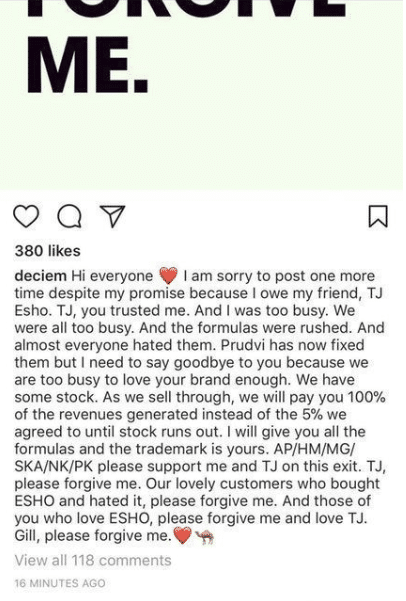
Let’s just say they lost a lot of customers.
If someone does have access to your social media accounts and leaves the company—for whatever reason—make sure you revoke their access and change the passwords.
Social media best practices for Facebook
1. Pare down your copy
Unlike with some other platforms (LinkedIn), the copy should be short, concise, and SEO optimized. According to data gathered by CoSchedule, your target word count should be around 111 characters. One emoji is okay. For all those verbose copywriters out there, will you accept this challenge?
2. Don’t overuse hashtags
Similarly, don’t bog down your posts with tons of hashtags. Try to work them into your copy, and limit yourself to one or two.
3. Post videos
Facebook is becoming increasingly video-oriented. But don’t force your viewers to navigate away from Facebook by linking to other websites like YouTube. Instead, directly upload your video content to Facebook.
This will also make your videos appear in more feeds. If you have the time, look into Facebook audience optimization—it’ll help you make sure the stuff you’re creating is actually what your audience is looking for.
*Bonus tip
Make sure your videos have closed captioning. Did you know that 85% of Facebook video watchers prefer watching videos without sound?
Social media best practices for Instagram
1. Use those hashtags!
Unlike Facebook, you can go wild with hashtags on Instagram. (But not too wild.) Instagram lets you use up to 30 hashtags, and if you choose them well, you can boost engagement and reach a wider audience. Just make sure you’re using the right hashtags that’ll put you in the conversation and on the map, like Pyrrha does here:
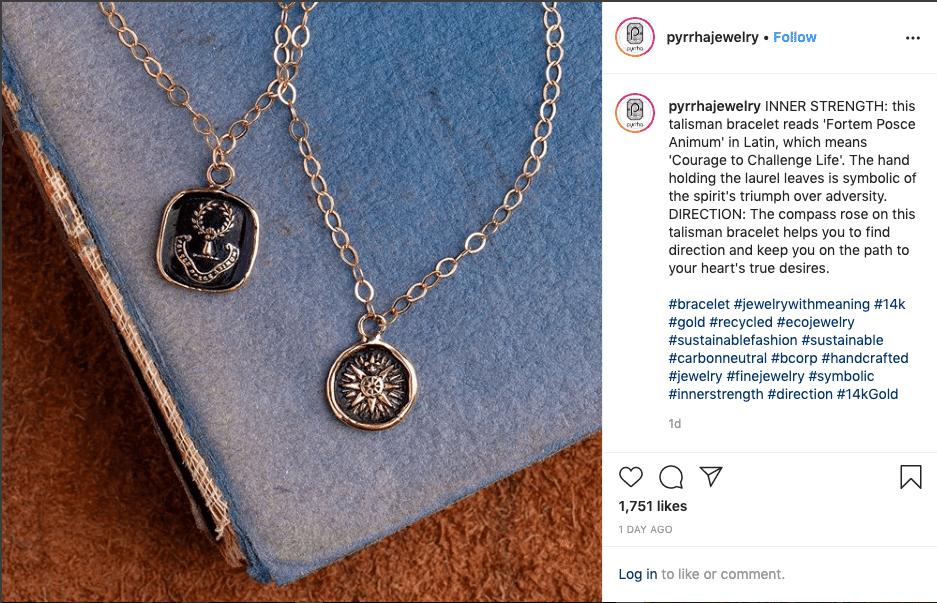
Even though hashtags are useful, sometimes you’ll want to hide them for the aesthetic. (Who wants to see a wall of blue text and number signs all clustered together?) If you’re worried about all the hashtags ruining the look of your Instagram caption, you can hide your hashtags (kind of) in a comment instead of in the caption to keep your posts looking streamlined and #aesthetic.
2. Location, location, location
Geotagging is a great feature that can boost those social media engagement metrics, but according to AdWeek, only 5% of posts include a location tag.
The posts that do, however, can get 79% more engagement.
Geotagging is most useful if your store or small business has a specific location and you want to reach a local audience. Here’s Herschel Supply promoting its umbrellas for the (very apt) London weather:

3. Work with influencers
Influencers are an interesting category of independent workers. They’ve nailed their own voice and tone and have grown an organic audience that’s often fiercely loyal. If you think influencers would be an asset to your marketing strategy, think about whether you’d want them to post ads of your product on their accounts, or if you want to post photos of them with your product on your own account.
There are perks to both. Maybe they have a much bigger audience than you and can reach more people, in which case you’d want them to post something about you on their accounts!

Either way, make sure you give them clear directions about how “salesy” you want the post to look. They’ll probably provide guidelines as well. For example, a fashion blogger wearing your shoes seems on-brand (and might not even register as an ad until you read the caption). A makeup guru partnering with a SaaS company, on the other hand, would be odd.
Social media best practices for Twitter
1. Be mindful with your hashtags
Like Facebook, you should be selective and minimal with your hashtag use. A good hashtag will give your tweet exposure, but if you use too many, your readers’ eyes will glaze over and they’ll move on. Don’t use more than two or three hashtags, and try to work them into the tweet instead of just bunched together at the end.
2. Set up an automated Twitter schedule
Twitter is a high-volume, fast-paced network that’s always being updated. You need to be posting constantly and consistently to keep up. Some brands even post the same thing a few times a day since posts get pushed down the feed so quickly by new content. Using a tool to automate your posts is especially useful for Twitter and will free up time and resources for you.
3. Reply to comments
The purpose and beauty of social media is that you can engage directly with customers and everyone can see the conversation. Wendy’s is a master at replying to Tweets that mention the brand:
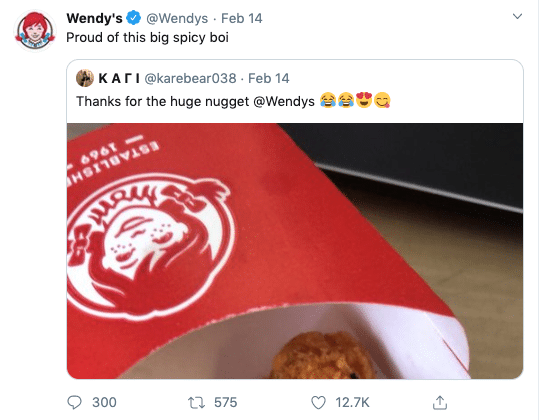
Make sure you’re answering questions and responding to comments. Otherwise, snubbed readers will be dissatisfied and, because these comments are public, other people will see that you don’t take the time to continue conversations. Not good.
4. Tell stories using threads
We’ve all been sucked into a Twitter thread about a harrowing run-in with a ghost or an awkward breakup overheard at brunch (or maybe it’s just us?). If you have a really interesting story that relates to your brand, Twitter allows you to tell it, 280 characters at a time, in a thread. This makes longer tales super easy to follow. Just hit the little (+) as you’re writing your first post, and the next post will be nested underneath it, and so on, and so on….
Social media best practices for Pinterest
1. Focus on inspiration
Pinterest is all about inspiring its users. Your Pinterest content should be geared towards this goal, rather than blatantly pushing sales. If your product is kitchen appliances, for example, share delicious recipes that users can use your product to recreate.
2. Use the boards
Content on Pinterest is saved (or “pinned”) to boards that can be public or private and organized by theme. Create multiple, well-curated boards that’ll keep your followers scrolling. Like Instagram, you need a good eye and strong visuals to pull this off. Make sure you give your boards catchy and interesting titles—and don’t forget to give each board an attractive title image!
General Electric makes great use of different boards:
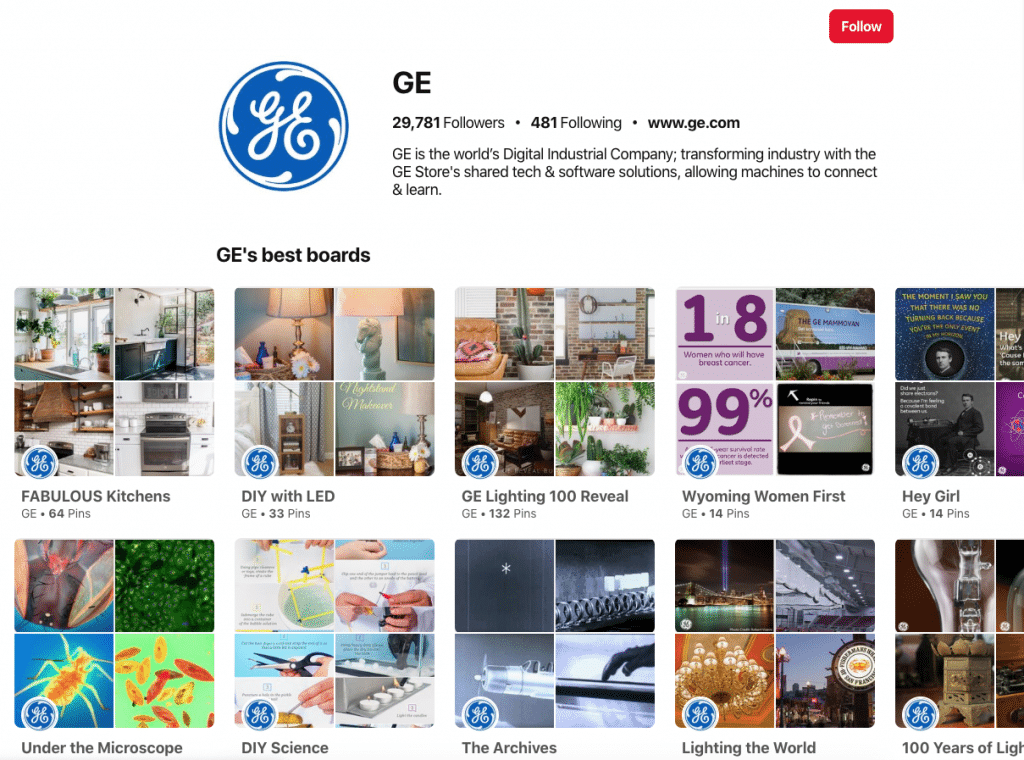
3. Repin content
Like Twitter, Pinterest is driven by reposts (only they call them “repins”). So don’t be afraid to branch out and repin content from other users. This will help round out your account, break up the advertisements, and boost engagement. This also takes the burden off of you in terms of continually generating new original content.
One great example of a business Pinterest account is encircled, a small fashion company focusing on ethical and sustainable practices. Their Pinterest features their own content, as well as travel tips, minimalism, sustainable living, and inspiring quotes.
Most importantly, all of their repins are relevant to their brand. The result is a beautiful and engaging account that users can spend hours scrolling through.
4. Install “Pin It” buttons on your websites
Pin It buttons allow readers to save websites to their Pinterest. Installing Pin It buttons is an easy and effective way to drive traffic to your Pinterest, which in turn will drive traffic from Pinterest back to you. Once the button is installed, your readers will do the work for you. You’ve got a few options for what kind of button you want to use:
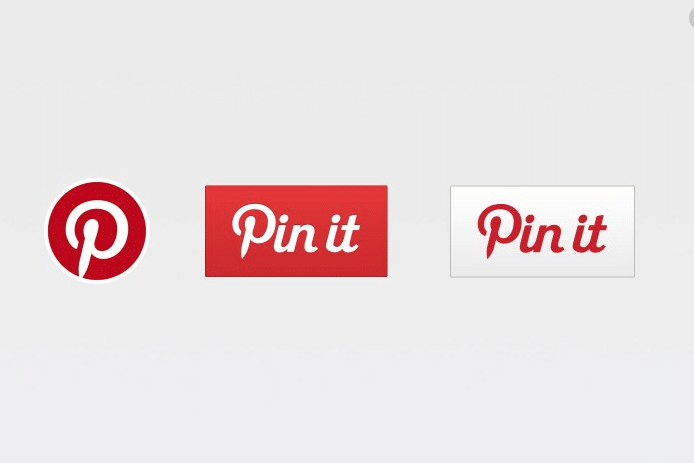
Social media best practices for Snapchat
Before there were Instagram stories, there was Snapchat. When it launched in 2011, there was no other network like Snapchat. Its popularity might have been eclipsed by Instagram and Facebook with their copycat Stories features, but Snapchat is still incredibly popular with teenagers and has an evenly split demographic.
1. Create original content
You might be tempted to reuse your Instagram content on Snapchat to save time and resources. However, most Snapchat users are also on Instagram, so why would they follow you on both platforms to see the same content twice? You have to give your audience a reason to follow you, so create content that’s original and exclusive to Snapchat.
Snapchat content doesn’t have to be just ads either. For example, you can post fun behind-the-scenes footage, employee profiles, or sneak peeks at upcoming products. Here’s Everlane showing how their clothes get made by taking their Snapchat followers on a tour:
2. Make use of Snapchat’s built-in ad tools
Snapchat has several innovative tools for creating engaging ads. There are a wide variety of ads you can use, including the classic ads that play between stories, ads that link to your products, and ads that’ll get you on the coveted Discover page. You can even design fun filters and lenses for users to play with, creating an immersive and interactive experience. (More on interactive content here.)
3. Fine-tune your target audience
Okay. So you know you’re on Snapchat because you want to reach a younger demographic. But you can get even more specific than that. Customize your advertising so you’re getting the exact audience you want. Are you hoping to reach college students studying the sciences in California, or multilingual highschoolers in Canada? Snapchat lets you select your demographic based on age, location, preferred device, gender, language, education, income, and even marital status.
4. Be prepared to cross-promote
It can be extremely difficult to get users to notice your account if you’re relying on Snapchat alone. Advertise your Snapchat account on your other social media accounts, emails, and in real life with handy QR codes.
Social media best practices for TikTok
The new kid on the block isn’t messing around. TikTok is a massive platform that centers the individual, and its effects are rippling throughout the other platforms. For instance, Instagram’s new “Reels” feature seems to take direct inspiration from the short and shareable TikTok video format.
Navigating any new platform can be a real minefield, and with Gen Z—the most social-media-savvy generation to date—running the table, be sure to follow these tips to successfully.
Work with influencers
Just like Instagram and Snapchat, influencers rule TikTok. There are several ways to make your content heard via these individuals. Targeted ads on your own page, that come up in people’s For You Page as they scroll, is one option. But another great way is to engage influencers to do sponsored posts on their own platforms. That way, you’re sure to reach their wider audience as you grow your own brand.
“FYP” is your friend
Slap this hashtag on videos you want anyone to see as they scroll their For You Page. Who knows? The algorithm might smile upon you and help that post go viral.
Be authentic
No one knows “cringe content” better than Gen Z. Don’t try to be something you aren’t; there’s room for everyone on TikTok, and it’s better to reach your real audience with niche content. And don’t be afraid to mess up… or post those bloopers! The less polished, the better, in a lot of cases.
Turn on Duets and Stitch
Want more shares? Make sure TikTokers can interact in more way than one. Besides commenting directly on your videos, there are options to Duet your video (post a side-by-side reaction) and Stitch it (show a short clip of your video followed by a viewer’s response).
Check your “@ Mentions”
This section of your Notifications is where you’ll be able to see who’s Duetting and Stitching your videos or directly mentioning you in other videos’ comments. This is an important area to watch to make sure your content isn’t being called out for being hurtful, offensive, or otherwise problematic. That’s a bell that is very hard to un-ring on TikTok.
Social media best practices for LinkedIn
1. Be professional
The whole point of LinkedIn is that it’s a professional network. This is where being able to adapt your brand’s tone is crucial. Flashy GIFs and emojis wouldn’t be appropriate here for some brands, so this is where it’s important to know your audience.
2. Post job listings here
LinkedIn is a professional network for networking, so it’s not surprising that job hunters flock to LinkedIn. So if you’ve got openings in your company, put together a job listing and post it. It looks good because people can see you’re growing, and in addition to connecting with candidates, you can also use this to build your company brand and attract better talent over the long run.
3. Share industry-specific content
LinkedIn is a great place to post mid and bottom-of-the-funnel articles (aka articles that are more specific to your product as opposed to super high-level topics). LinkedIn users are also more likely to be looking for blog posts and articles about very specific topics. Everyone is trying to get ahead, so make sure your account has a wealth of industry knowledge and advice.
You can even get leads this way by offering downloadable goodies in exchange for peoples’ contact information:
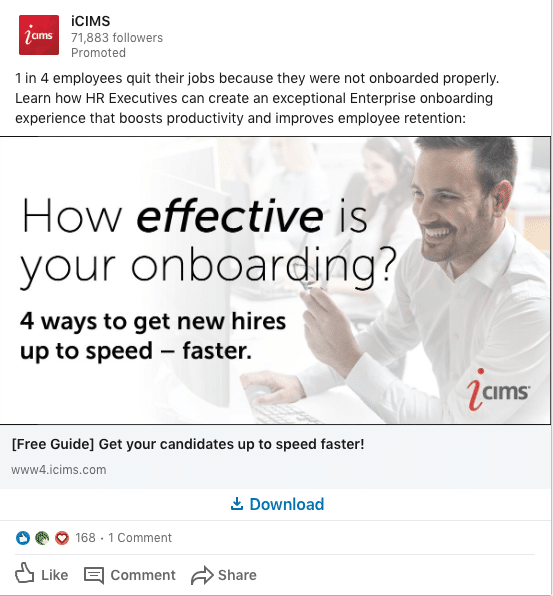
Up your social game with these social media best practices
Whichever platform you choose, remember that social media is a way to connect and have fun with people who are familiar with your brand, and to build brand awareness with prospects, too.
Don’t be afraid to let your personality shine through, and don’t just post your own stuff—repost and like your audience’s content. Social media is a two-way street!
In today’s digital ecosystem, social media integration is so important for your business. But thanks to tools like RingCentral Engage Digital, streamlining social media into your business communications strategy is easy as pie.
Originally published Sep 21, 2022, updated Nov 03, 2023



